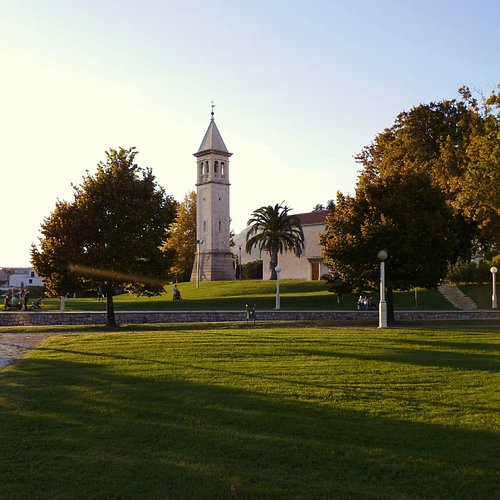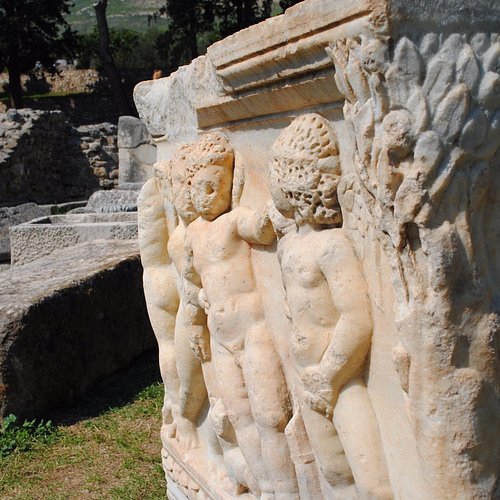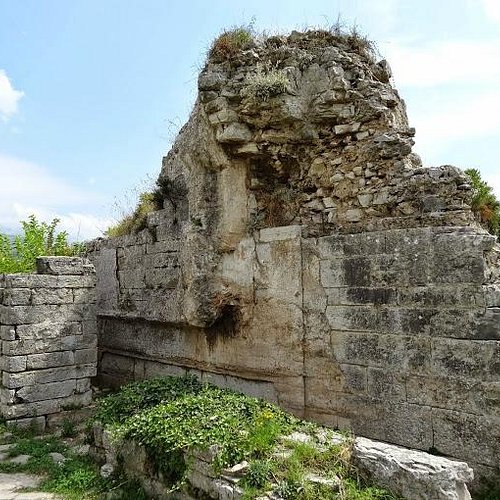Things to do in Solin, Dalmatia: The Best Points of Interest & Landmarks
Solin (Latin and Italian: Salona, Ancient Greek: Σαλώνα) is a town in Dalmatia, Croatia. It is situated right northeast of Split, on the Adriatic Sea and the river Jadro.
Restaurants in Solin
1. Gaspina mlinica
Overall Ratings
5.0 based on 7 reviews
2. Our Lady’s Islet (Gospin otok)
3. Suplja Crkva
Overall Ratings
4.5 based on 3 reviews
This sight is close by the river Jadro, to the east of Salona. Remains of churches on this place are known for centuries by the local people by the true, descriptive name of Suplja crkva (Hollow Church). The name originates from the time when there were walls of an unattended church with a collapsed roof, recorded on the Camuci's map of 1571.
4. Manastirine
Overall Ratings
4.5 based on 14 reviews
The Christians followed Roman tradition and customs that the dead had to be buried outside towns. Manastirine, along with Kapljuc and Marusinac were private country lands for cemetaries. The reason was that in Salona, the first Christian cemeteries were created at the time of illegality, when Christianity had no right of preaching.
5. Town Baths
Overall Ratings
4.0 based on 9 reviews
Besides the private baths in luxurious private homes and villas, in towns there were also public thermae - baths by Ancient Roman customs and traditions. The best preserved Salonitan thermae are in the so-called Peter's Street, to the east of the town basilicas (the Christian episcopal cemetery complex).
6. Town Gate - Porta Caesarea
Overall Ratings
4.0 based on 9 reviews
The large gate, named picturesquely Porta Caesarea for its monumentality, was located in the eastern walls of the initial town, the Dyggve's urbs vetus. Both the gate and the walls next to it are evidently old. They could have been built at the beginning of the first century A.D., i.e. in the last years of August's rule.
Reviewed By covjek2019 - Mostar, Bosnia and Herzegovina
Just like a read in one of the reviews, why not say it again - not a main attraction in city of Split, but on 'your day off', you should really come to this whole Roman complex - and it is a shame that excavations, archeology is not a non-stop operation there because to reveal the whole of Roman 'megapolis' on Eastern shores of Adriatic would make a hell of an attraction!
7. The Five Bridges
Overall Ratings
4.0 based on 7 reviews
The road from the oldest part of Salona, through the Porta Caesarea eastward, about 100 metres after leaving the town, crossed a Salon backwater. The road was laid on stone arches, known in the local terminology as the Five Bridges. This locality was excavated at several different times, like many other locations in Salona.
8. Town walls
Overall Ratings
3.5 based on 7 reviews
The elliptic core of the town was surrounded by walls built over several centuries. They are quite well preserved on northern side - there are about a hundred square towers. The walls extend from the amphitheatre to the town northeastern gate, by which the road led into hinterland, firstly to Klis, and then by one branch to Andetrium and by other to Osinium (Sinj) and further.
9. Gradina
Overall Ratings
3.0 based on 1 reviews
Gradina (Hill-Fort) is complex located next to the river and the Roman town's eastern walls. A church with an unusual ground plan was built over the Roman epoque remains. Today it is situated within a medieval fortress. It had purpose to protect the people of Split from the people of Klis. Today, it is in a fortress built during the Venetian-Turkish wars, in the 16th century.
10. The Basilica of St. Peter and Moses
The basilica is as well known as "Hollowed church". It was built in 11th century and its purpose was coronation of kings.









